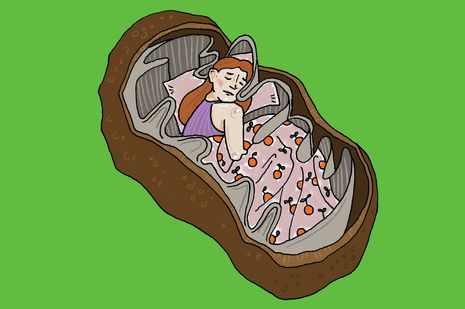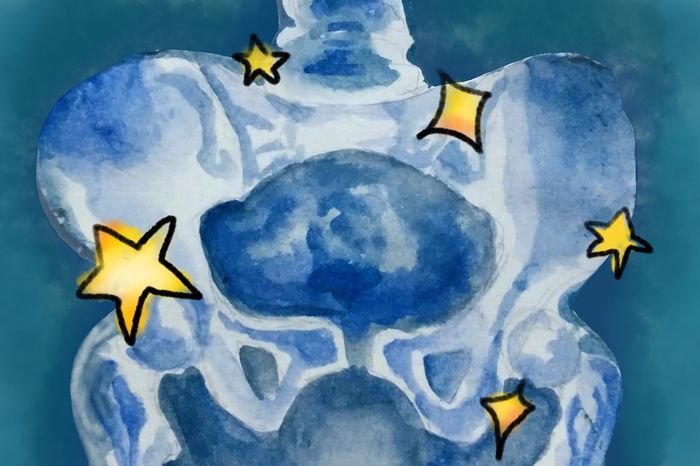Power, sex, slumber: mitochondria may cause the brain’s need to sleep
Nathaniel Ostle explores the research that suggests the activity of these microscopic powerhouses may have resulted in the evolution of sleep

All animals sleep in some form, despite only one having invented alarm clocks. That form ranges from momentary catnaps to lethargic 20-hour bat naps, sometimes involving much of the brain, sometimes only part (some birds can sleep on the wing), and sometimes no brain at all (the brainless nervous systems of jellyfish show sleep-like behavioural reductions). Surprisingly, considering the intensity of Darwinian competition to survive in the wild, no animals have yet evolved to remove this daily period of extreme vulnerability – second year medicine students can cry me a river.
“The physiological deficit that sleeping might restore is more obscure, buried deep within each individual cell”
The apparent inevitability of sleep across the animal kingdom suggests that the process is a physiological requirement of being a complicated multicellular organism, rather than an adaptation to conserve energy or consolidate memories, although sleep certainly does these things too. Other physiologically-necessary activities, like eating and breathing, have a clear deficit factor – you eat to restore low energy levels; you breathe to obtain oxygen. The physiological deficit that sleeping might restore is more obscure, buried deep within each individual cell – in those infamous powerhouses, the mitochondria.
Mitochondria are more interesting than most secondary school curriculums would dare to suggest. Back in their day, the tiny energy-generating globules were free-living bacteria, before being consumed by a larger monocellular organism, which offered the mitochondria safety in return for highly efficient energy generation. This energy breakthrough drove the evolution of multicellular life, eventually resulting in unpopular textbooks passing it off as the ‘powerhouse of the cell’.
However, this increased energy production comes at a cost. When producing the energy-currency molecule ATP, mitochondria transfer electrons between molecules. Sometimes these electrons leak prematurely, reacting with surrounding oxygen to form dangerous Reactive Oxygen Species (ROS). If the cell was a tiny China shop, these ROS are even tinier bulls, damaging DNA and proteins, sometimes even resulting in cell death.
“These intracellular powerhouses both enforced the evolution of sleep, and (through multicellularity) enabled the evolution of alarm clocks”
The link between the energy/ROS producing mitochondria and sleep comes in the form of transcriptome studies of fruit flies from Gero Miesenböck and his colleagues. Genes produce molecules to do their bidding; transcriptomes record how many of these molecules are in a cell at a given time, and what genes they correspond to – effectively measuring the activity of different genes over time. Miesenböck’s team sleep-deprived some flies, while allowing others to be well-rested. Transcriptome data from sleep-deprived flies showed high activity in genes with mitochondrial and ATP production roles – no such pattern in flies with a good night’s sleep. Furthermore, this activity was specifically found in neurons involved with the control of sleep, encoding sleeping and waking.
So, genes with mitochondrial roles are upregulated in response to sleep deprivation. Observing mitochondria directly shows enhanced renewal and repair behaviour, as well as more splitting (this is good). These changes can be reversed by allowing the flies some recovery sleep, suggesting they initially arose to make up for sleep lost. Now, remember those bull-like ROS, created by leaky electrons? Creating more leaks, by loading up the mitochondrial supply with extra electrons, precipitates fly sleep. From this data, it seems that sleep is a behavioural response to manage mitochondrial metabolism, constantly necessary due to the eternal trade-off between producing ATP and ROS, happening on a fundamental level in every single cell.
Just like breathing to restore oxygen, sleep seems unavoidably necessary for life. Like breathing and eating, sleep plays out at the level of the entire organism. Unlike those other functions though, it is mandated by the individual mitochondrial metabolism of singular cells. Mitochondrial needs are a constant factor of multicellular animal life – which was enabled by mitochondria. These intracellular powerhouses both enforced the evolution of sleep, and, through multicellularity, enabled the evolution of alarm clocks – mitochondria truly encapsulate our human duality and ingenuity.
 News / Cambridge students accused of ‘gleeful’ racist hate crime4 December 2025
News / Cambridge students accused of ‘gleeful’ racist hate crime4 December 2025 News / Churchill announces June Event in place of May Ball3 December 2025
News / Churchill announces June Event in place of May Ball3 December 2025 News / Cambridge cosies up to Reform UK30 November 2025
News / Cambridge cosies up to Reform UK30 November 2025 News / University Centre hangs in the balance28 November 2025
News / University Centre hangs in the balance28 November 2025 News / Write for Varsity this Lent3 December 2025
News / Write for Varsity this Lent3 December 2025










